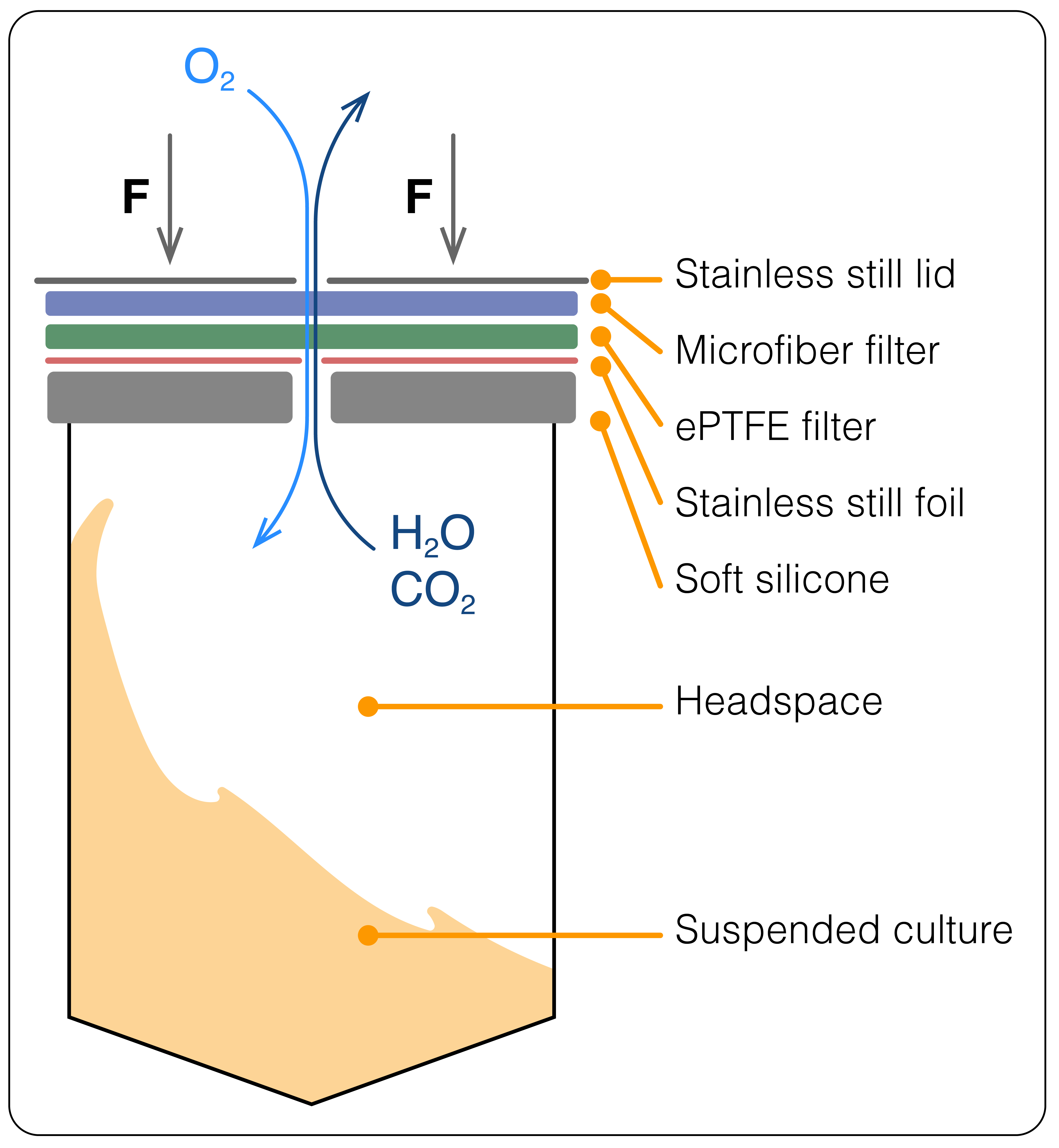Functions & use of sandwich covers
The most critical aspect of microbial and cell growth in microtiter plates is the closure system of the individual wells. The closure system must:

- Prevent (cross)-contamination even during vigorous shaking
- Permit a reproducible and defined exchange rate of headspace air
- Limit evaporation.
- Equalize physical conditions in all wells: the wells in the corners should have exactly the same characteristics as the wells in the center of the microtiter plate.
In all of these aspects, the sandwich cover/clamp solution has proven to be an superior alternative to adhesive semi-permeable foils, making it the top choice for high quality research in microplates.
Inspired by the general principle used for multi-litre bioreactors (an average aerobic microbial culture needs an air supply of one working volume per minute), we designed the standard sandwich covers (for fast growing bacteria) to have a headspace refreshment rate of 1-2 culture volumes per minute. Such a headspace refreshment rates secures oxygen concentrations in the headspace of at least 18% (v/v), even at an oxygen-consumption rate by the culture of 40 mmol O2/L/ minute.
Such a headspace refreshment rate assures a sufficient oxygen supply, but limits the evaporation to about 2% of the culture volume per day (at an ambient humidity of 50% and 30ºC, see hydrodynamics, oxygen transfer rates): this degree of water loss is acceptable for most projects, and so avoids the need for air humidification in the incubator for most applications. The latter additionally prevents fungal growth in the incubator and so contributes to a safe working environment. To increase the gas-liquid transfer, orbital shaking is our method of choice since it is proven to be effective (see literature), and gives rise to exactly the same hydrodynamic conditions in each well (see hydrodynamics, oxygen transfer rates).
Our classic sandwich covers are reliant on the vertical force applied by our clamping systems; without this vertical force, there may be cross-contamination, and also the covers may start "rattling" above a certain shaking frequency.
Choosing the right cover
Hole size: In order to determine what hole size is best for your purpose, you need to assess your tolerance to evaporation. For bacteria and yeast cultures, which are typically relative short (< 5 days), we recommend the regular covers (CR1224, CR1296), as evaporation over time is not a big issue and maximizing the headspace air replenishment is of more importance. For slow growing strains and (animal) cell cultures, we supply sandwich covers with slower headspace exchange rates, also referred to 'low evaporation covers', (in the order of 0.2 culture volumes per minute). This allows cultivation times of 5-14 days without excessive evaporation.
Advantages of types of Silicon:
- Spongy (cell) silicone, which is relatively soft, and easy to compress, and so closes off the wells already at relatively low forces. Please note that this kind of silicone is not “ spongy” is the sense that it take up water: it has closed cells, filled with air, and the surface is a solid film, with no pores.
- Solid silicone layers, for these applications where the permeability of the silicone has to be absolutely minimized (e.g. for low culture volumes, such as in the covers for 96-round shallow well plates CR1596), but also for certain type of fungi that may tend to grow to inside the spongy silicone.
Layers of the sandwich cover
Sandwich covers have 4 or 5 layers (all re-usable and autoclavable):
A: a stainless steel lid for rigidity
B: a microfiber filter (blue)
C: an ePTFE filter (0.3 micron) laminated between two polyester/polyamide fabrics (green)
D: a stainless steel foil with pinholes to control the headspace refreshment rate and evaporation (only in covers CR1596 and CR1524a)
E: a silicone layer with 96 holes (to hermetically seal the "mini-reactors")
Contact us
The best way to contact us is to use the form below. However, you may also contact Wouter Duetz directly by e-mail. This e-mail address can be found on the "about us" page.
Optionally you may provide us with additional details about your project; culture type & duration, throughput and desired culture volumes.
We are happy to assist you. We generally reply within a single business day.
